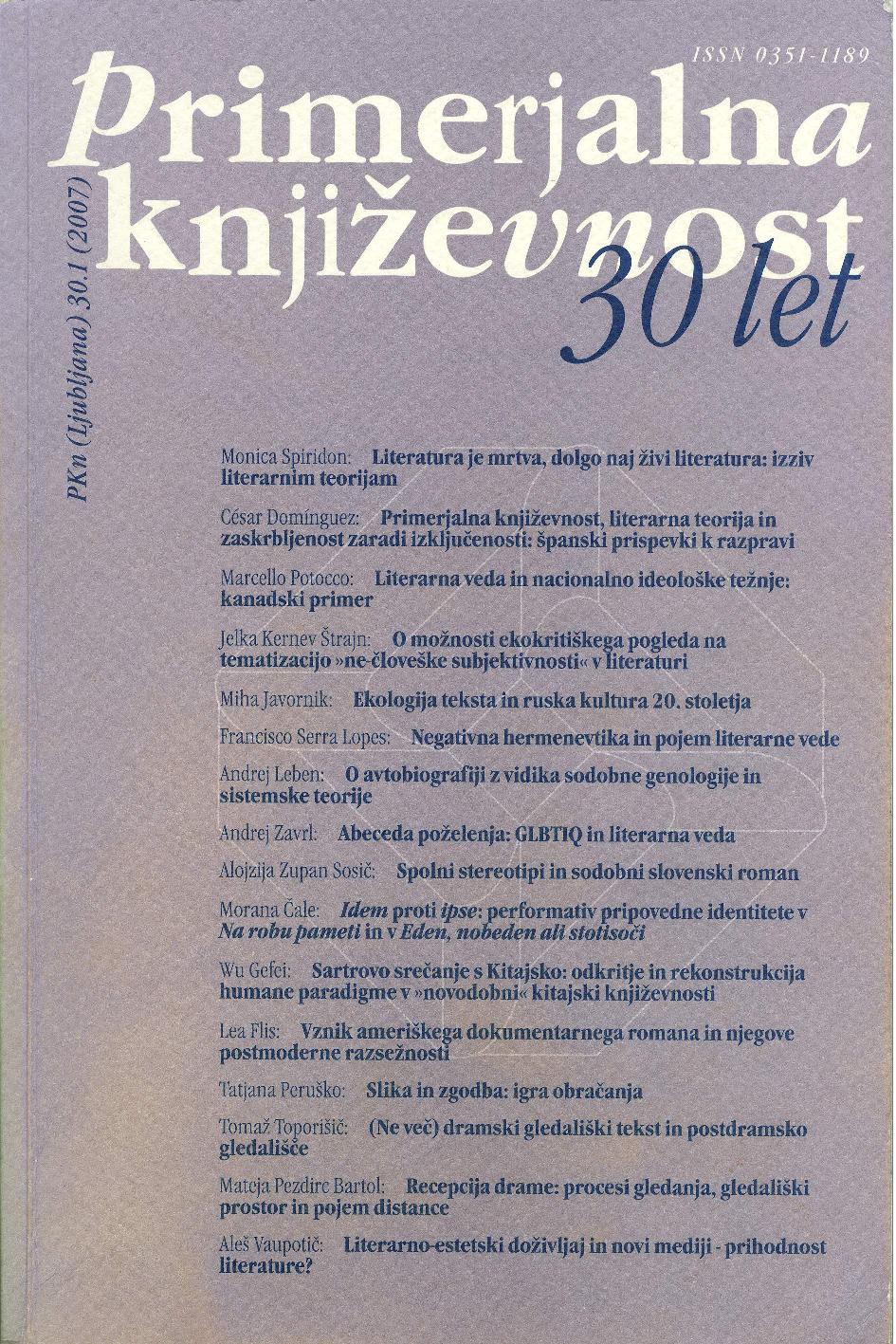Idem vs Ipse: The Performance of Narrative Identity in Pirandello’s Uno, nessuno e centomila and Krleža’s Na rubu pameti
Keywords:
narratology, narrator, narrative technique, narrative identity, Pirandello, Luigi, Krleža, MiroslavAbstract
Articulating the interdependence between narration and the constitution of personal identity in structurally homologous ways, Pirandello’s Uno, nessuno e centomila (One, No One, and One Hundred Thousand, 1925) and Krleža’s Na rubu pameti (On the Edge of Reason, 1938) could be taken to substantiate Ricoeur’s claim that fiction is a laboratory that tests the potentials of narrative identity. In both cases, the plot revolves around a break that seems to have occurred within the previous, presumably coherent, identity of the respective main characters, but which is also the foundational event of their birth to narration, both as narrative characters and as autodiegetic narrators. The “semic configurations” (Barthes) of the self-narrating subjects are predicated on the acknowledgment of the gap between their appearance as “heteronomically” determined (Žmegač) persons and their ungraspable inner selves, the latter being suddenly perceived as obliterated by the former. The two aspects of personal identity, which constitute an ethical-ontological and autobiographical split, correspond to what Ricoeur defines as the numerical identity of uniqueness, continuity, and permanence of structural properties allowing for successive re-identifications, or idem-identity (mêmeté), and the reflexive relation to one’s own self, implying responsibility towards the other, or ipse-identity (ipséité). The autodiegetical narrators provide an account of their characters’ efforts to recover their ipseities, shattered as these are not only by the inevitable exposure of the subject to the violence of the other’s gaze, but also by their own mechanical conformity to normalcy. Violence breeds violence: by deciding to destroy its double, and the self forfeits the possibility of its own self-reflexive action. The self claiming its rights is revealed to be a construction of narrative discourse – which, for its part, displays the improbable realization of the literary text’s ipseity; that is, of its meaning beyond the surface of its illusionary referentiality.References
Barthes, Roland. »Introduction à l’analyse structurale des récits.« Poétique du récit. R. Barthes, W. Kayser, W. C. Booth, Ph. Hamon. Pariz: Seuil, 1977 [1966]. 7–57.
– – –. S/Z. Pariz: Seuil, 1970.
Biti, Vladimir. »Krleža i evropski roman.« Književna smotra 26. 54–55 (1984): 63–82.
Krleža, Miroslav. Na rubu pameti [= NRP]. Zagreb: Naklada Ljevak – Matica hrvatska – HAZU, 2000 [1938].
Lacan, Jacques. Écrits. Pariz: Seuil, 1966.
– – –. Le Séminaire. Livre XI. Les quatre concepts fondamentaux de la psychanalyse. 1964. Pariz: Seuil, 1973.
Pirandello, Luigi. Jedan, nijedan i sto tisuća [= J]. Prevedla M. Čale. Zagreb: Konzor, 1999 [1925].
– – –. Uno, nessuno e centomila [= U]. Tutti i romanzi. 2. zv. Uredil Giovanni Macchia. Milano: Mondadori, 1990: 737–902.
Ricoeur, Paul. Soi-même comme un autre. Pariz: Seuil, 1990.
Žmegač, Viktor. Krležini europski obzori. Djelo u komparativnom kontekstu. Zagreb: Znanje, 20012.


